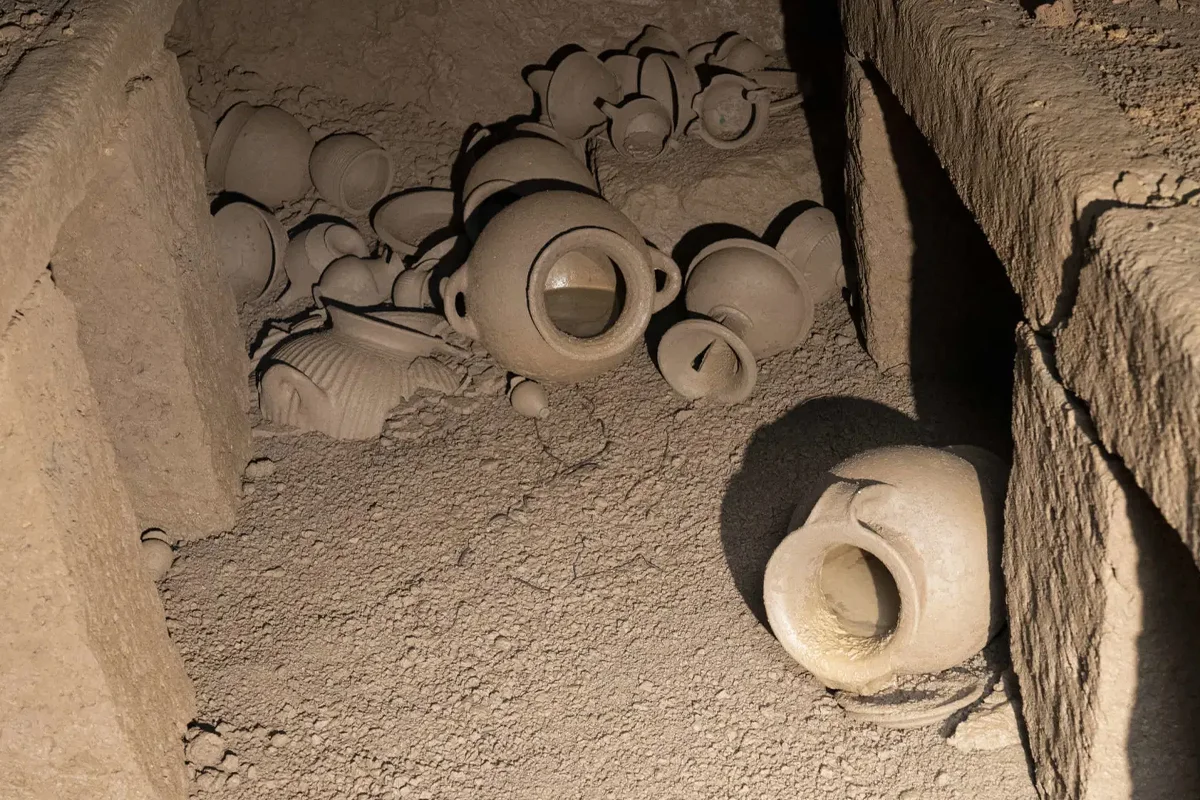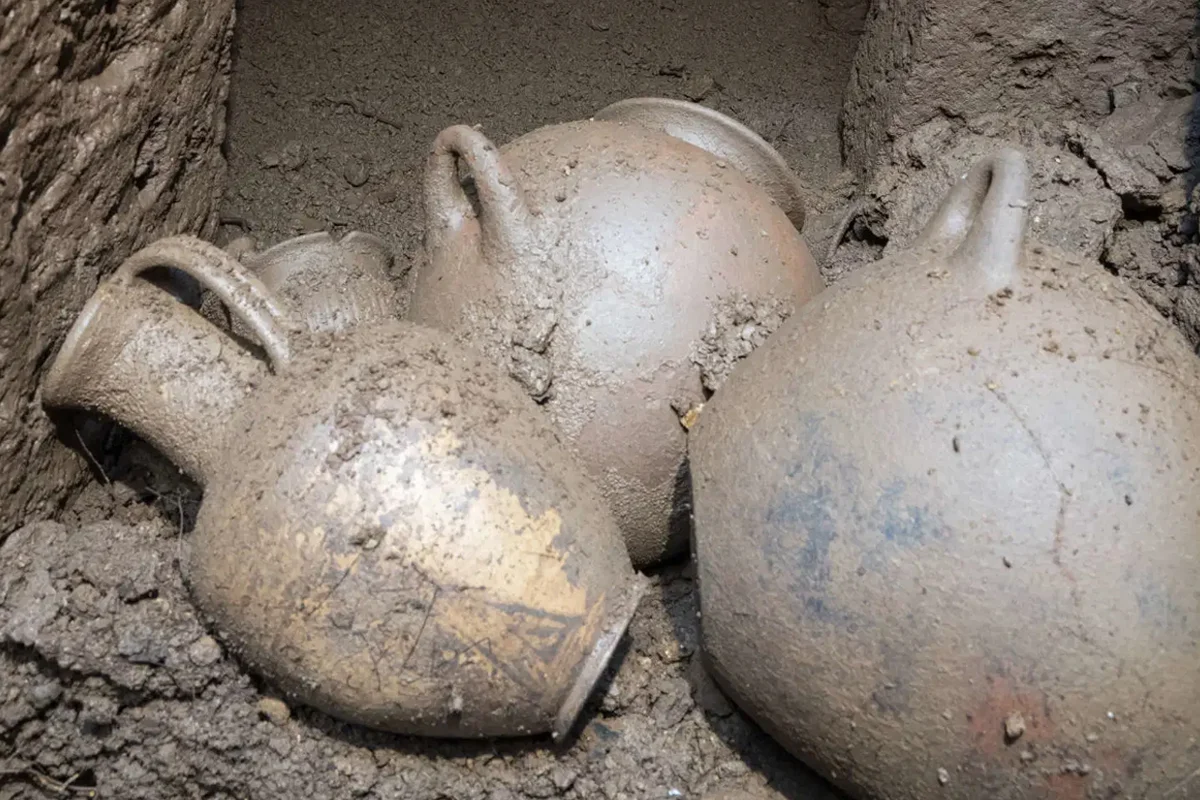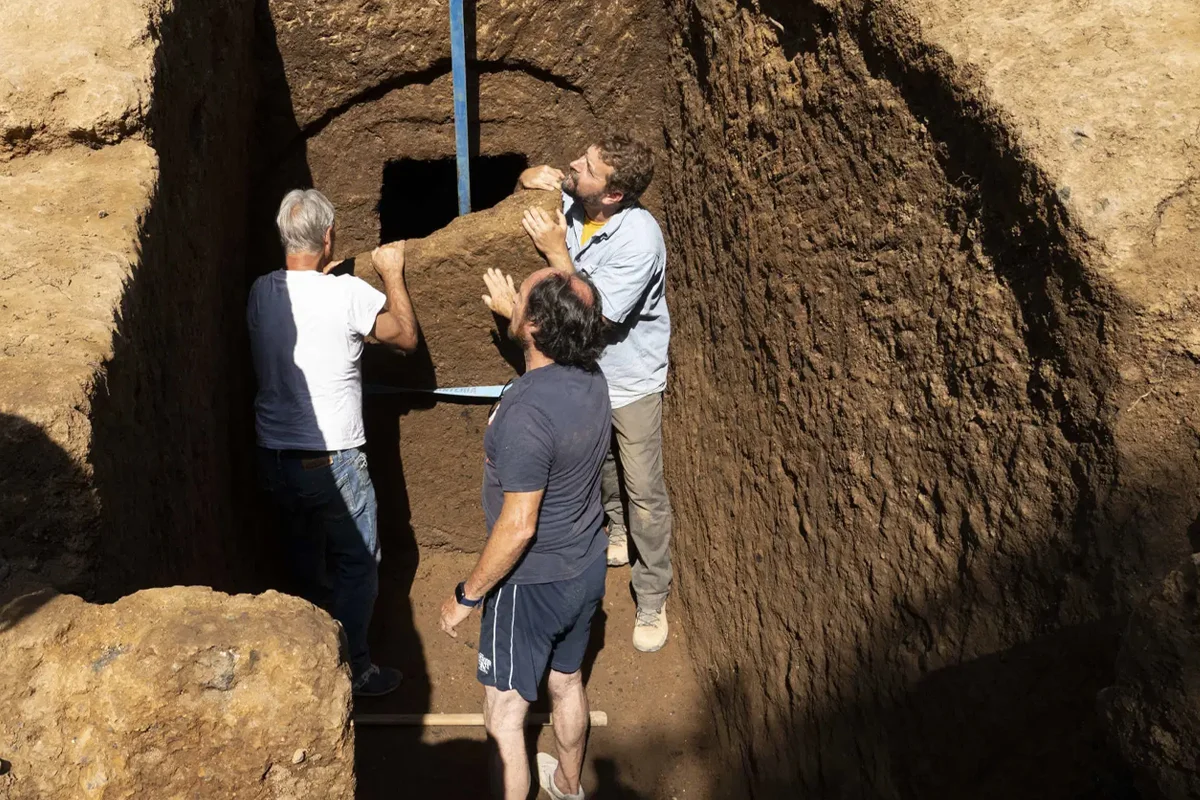An intact Etruscan tomb has been discovered at the site of the Necropolis of San Giuliano, which lies within the Marturanum Regional Park near Barbarano Romano, Italy.
The Necropolis of San Giuliano (named for the medieval church of San Giuliano) is one of the most significant Etruscan cemeteries in central Italy. Among its tombs, the “Queen’s Tomb” stands out as the largest, dating back to the 5th century BC.
This excavation was conducted by Baylor University working in collaboration with an Italian consortium of multiple cultural ministries along with local government authorities and park officials.

Upon removing the sealing slab of the tomb, a pristine burial chamber was unearthed containing ornately painted ceramic vessels in the Etruscan-Geometric style. The tomb also contains a burial bed, a basin, and several funerary bronze artefacts.
According to the archaeologists, the tomb dates from the late 7th century BC and is providing new insights into the Etruscan funerary customs and social structure.
The Superintendency Archaeological Director, Dr. Barbara Barbaro, said: “Necropolis of San Giuliano has more than 500 tombs around the settlement, most of which have been impacted by the subsoil in ancient times.”

“It is very rare to find an intact tomb. Hence the exceptional nature of the current discovery. An intact context is not only essential for protection, but also because it offers us a complete view of life through the ritual of death,” added Dr. Barbaro.
The tomb and its contents will now undergo further study and preservation, with the aim of bringing this unique chapter of Etruscan history to the public through future exhibitions.
Header Image Credit : Superintendency of Cultural Heritage
Sources : Superintendency of Cultural Heritage







